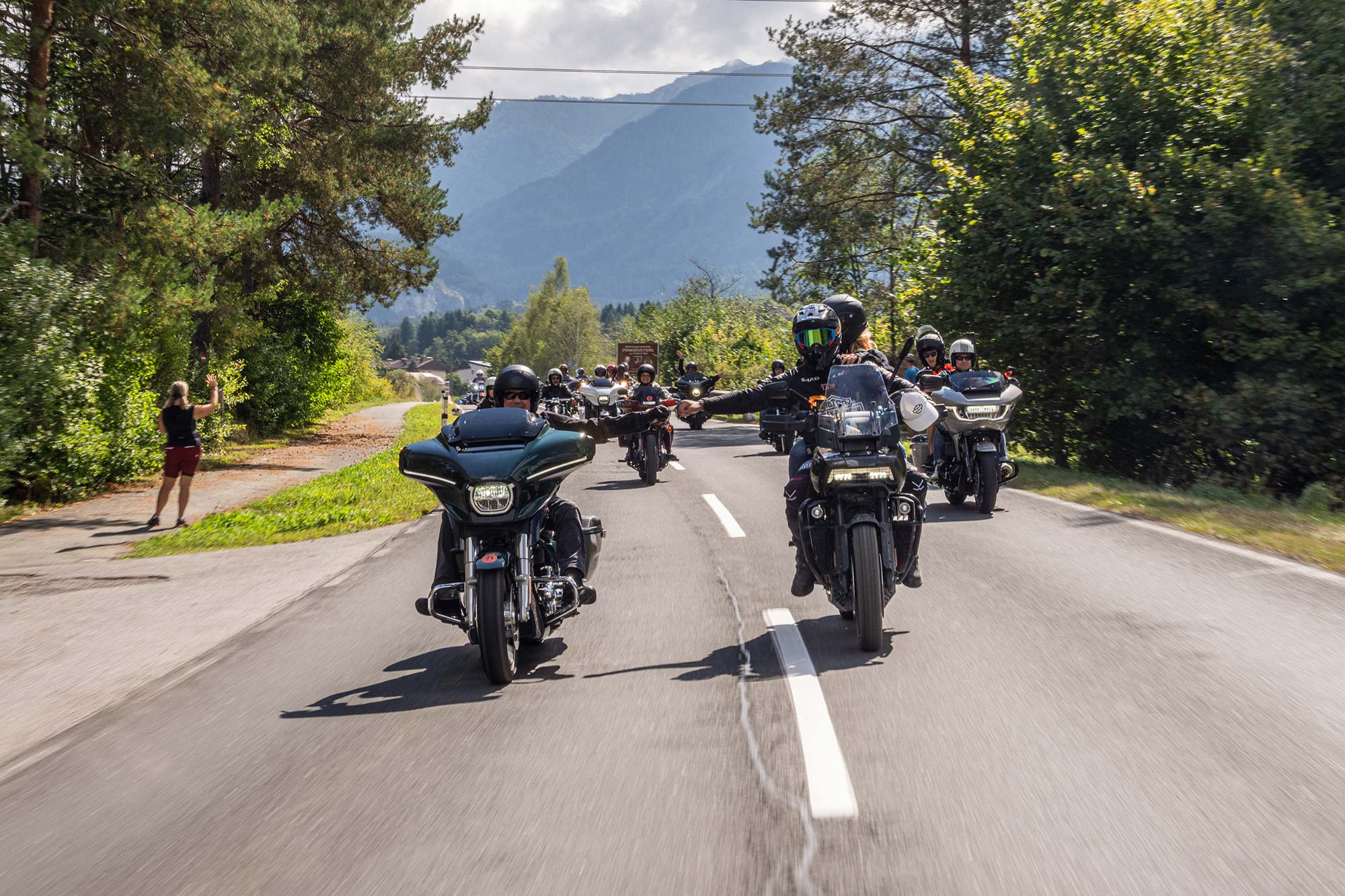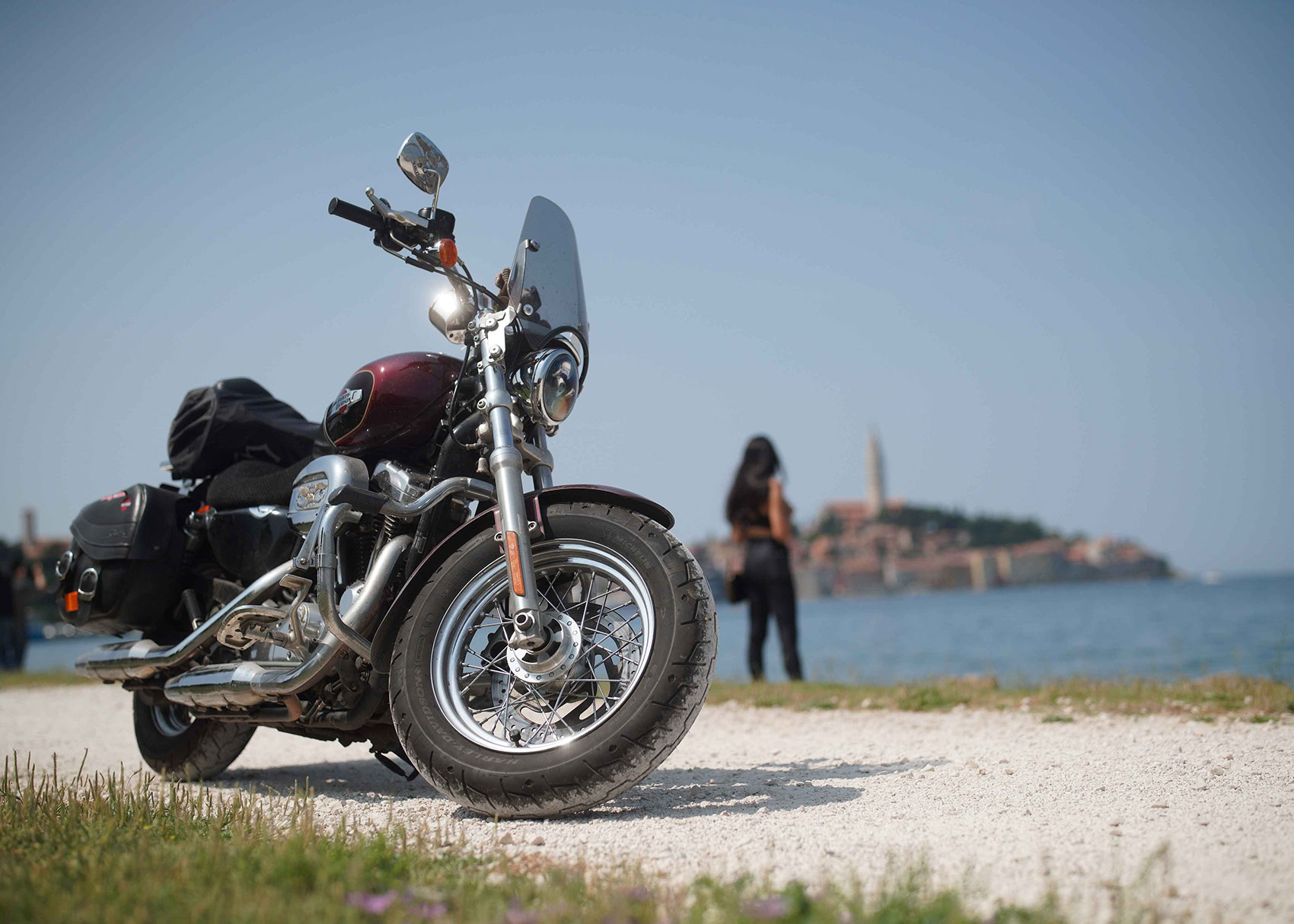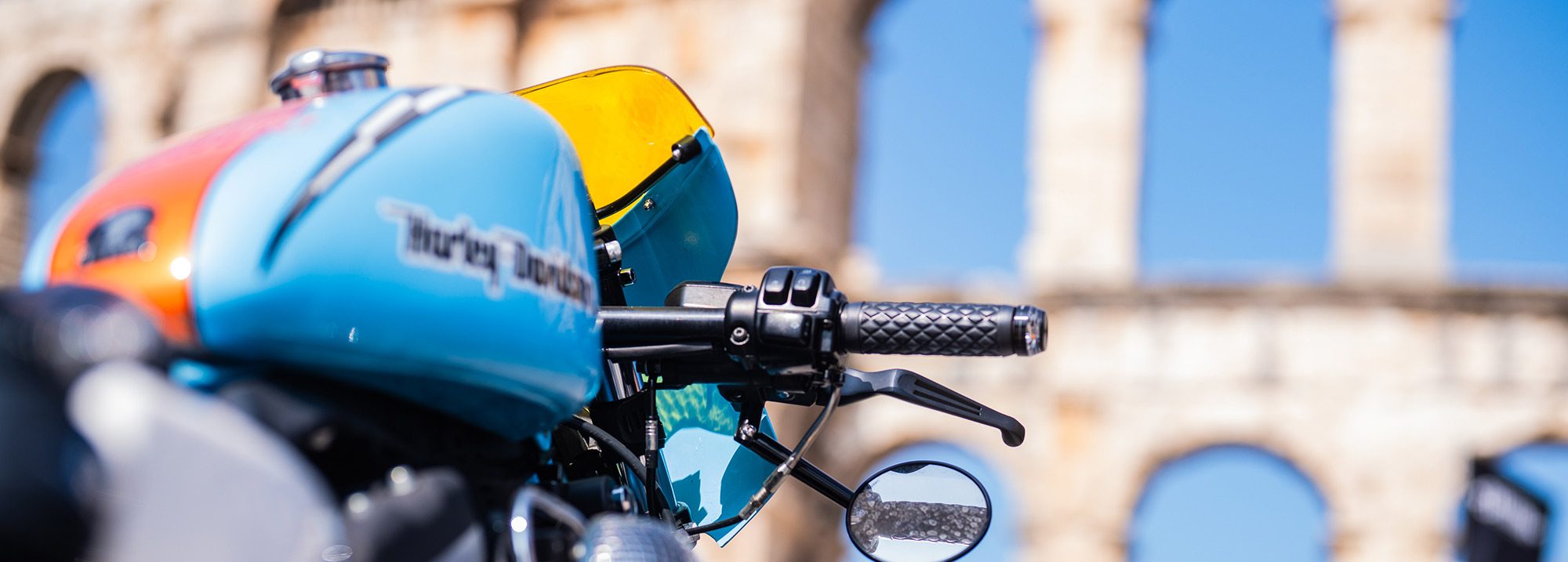
Putting the work back in: Harley-Davidson® bicycles
It is sometimes reported that the original Mr. Harley and three Mr. Davidsons said they started Harley-Davidson® to “take the work out of bicycling”. Though true, this statement is sometimes misconstrued to suggest that Harley-Davidson started as a bicycle company. This is simply not the case.
What is undeniably true, however, is that bicycles had a major influence on the Motor Company during those early years. The very first vehicles, after all, were essentially motor-driven bicycles. Despite their best efforts to promote a better way to travel on two wheels, standard bicycles continued to grow in popularity in the 1910s. With an eye on introducing new markets to motorcycling, Harley-Davidson decided to sell its own brand of bicycle, through an unlikely partnership with a sewing machine company.
The rise of leisure
The bicycle sales boom brought new potential for leisure-time riding. With its lower price and ease of use, it could also serve as a means for introducing younger people to the Harley- Davidson motorcycle. These conditions led to the signing of a deal with Davis Sewing Machine Co. of Dayton, Ohio in the autumn of 1916. According to the agreement, Davis sold the main component parts of the bicycles and shipped them= to Milwaukee for assembly. Harley-Davidson dedicated an entire building for production on Juneau Avenue in Milwaukee. Beginning in 1917, bicycles were sold mainly through Harley-Davidson’s motorcycle dealerships, though bicycle dealers filled that role in smaller towns.
Characteristic to H-D® bicycles was the familiar olive-green paint adorning the motorcycles since World War I. The bikes also had another hallmark, the letters H and D cast into the main sprocket.
Bicycle names included the ‘Diamond Frame’, ‘Ladies Standard’, ‘Boy Scout’, ‘Girls Juvenile’, ‘The Racer’, and ‘7-17 Special’. The Boy Scout was ultimately renamed, perhaps due to objections from the Boy Scouts of America. The ‘Motorcyke’ was the most reminiscent of a motorcycle, with a metal tank situated along the two top tubes in the frame. But this tank held a different power source: batteries for the headlamp.
The bikes brought unique marketing opportunities; young people could own a Harley® more easily than ever with hard work and saving. Adults with city commutes were encouraged to save money from the ‘high cost of street car riding’.

Short-term success
Sales were a blip on the H-D radar by 1920, at only about four per cent of overall domestic sales. It is also believed that sales never matched those of competitors due to limitations of the motorcycle dealer network. However, the bikes were a quality ride. Evidence lies in favourable product reviews and the premium price points, which ranged from the low $40s to the mid-$50s. Ultimately, the bicycle family was a casualty of the recession of 1920- 1921, which led to reductions in expenses.
As an epilogue to the short-lived bicycle line, Harley-Davidson learned in 1922 that Davis Sewing Machine Co. continued to produce and sell bicycles with the Harley- Davidson badge on them – nearly a year after the Motor Company had called an end to bicycle sales. After a cease-and-desist letter failed, the illegal activity was finally stopped by a personal visit from Arthur Davidson in the spring of 1923. Put that in your sewing machine and stitch it.
Tags:
Read more tales from the Harley Owners Group!
Events calendar
Read on for details of rallies and events taking place around the world. More regional events to be announced soon – watch this space!
Croatian Sunshine
The 31st European H.O.G. Rally returned to celebrate under blue skies in Medulin from 12-15 June 2025
In the pink
Creative imaginations were let loose on a spectrum of Harley models, with the top entries showcased along the marina


